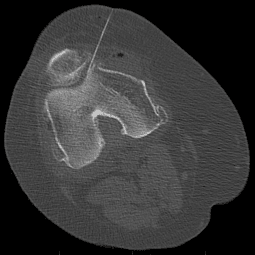Euflexxa Injections.
Overview
What is Euflexxa?
Euflexxa is the name used to describe a group of a gel-like substance made up of hyaluronan (sodium hyaluronate) used to treat osteoarthritis. Hyaluronan can be found in synovial joint fluid that acts as the body’s natural lubricant.
Why inject Euflexxa?
Euflexxa injections act as an artificial lubricant, supplementing an arthritic joint’s own synovial fluid, with the aim of reducing and potentially eliminating pain in a subset of patients who have not responded to other injections and/or conservative therapies. The additional lubricant aims to protect the cartilage, thereby reducing inflammation and therefore pain.
PROCEDURE
EUFLEXXA INJECTION
How is Euflexxa administered?
The skin is prepared using an antiseptic agent followed by which local anaesthetic is administered. Using a CT (Computed Tomography) scanner, the needle is rapidly and accurately delivered into the joint. Once position is confirmed, the Eufluexxa is then injected and a small dressing is applied. The degree of discomfort during the procedure is typically minor as the needle used is thin, local anaesthetic is used and the CT scanner ensures that the procedure is quick.
Duration of examination
Each injection will take approximately five minutes. Euflexxa is administered over 3 visits, each performed 1-2 weeks apart. Improvement of the Euflexxa injection is evident 8 weeks after the first injection.
RISKS
As for all medical procedures, there are risk associated with the administration of any medication, including Euflexxa. The chances of Euflexxa providing you with the benefit of pain relief in most patients outweighs the risk of experiencing a side effect(s) (discussed below). The decision to inject Euflexxa is not taken lightly and is carefully made by your referring doctor, based on your diagnosis.
The side effects and risks of a cortisone injection include:
Allergy to any of the substances utilised during the procedure, such as the dressing, local anaesthetic or antiseptic. This is usually minor and self-limiting.
Infection is a rare however serious complication (<0.1%), especially if injected into a joint. Most infections take at least a day or two to manifest so pain at the injection site after 48 hours may be considered to be due to an infection until proven otherwise. Even if not definitively proven, you be commenced on empirical antibiotic treatment.
Transient increase in pain at the injection site before the Euflexxa takes effect. Occasionally this may be severe, however usually lasts only 24–48 hours and is treated with a cold pack, paracetamol and/or anti-inflammatory medications. If this occurs and you are concerned, especially if the pain is not settling despite the above treatment, then please call contact your referring doctor so that they are able to examine, assess and manage you appropriately.
FAQs
Are there any alternatives to an Euflexxa injection?
Of course there are. Since an Euflexxa injection is used for treating osteoarthritis, it is an optional/elective procedure. Other options should be discussed with you referring doctor and may include anti-inflammatory medications, exercise, physiotherapy and surgery to name a few. The role of our radiologist is to perform the procedure requested by your referring doctor and therefore ensure that the cortisone is injected safely and into the correct location.
Post Injection Care
After receiving an injection of Euflexxa, at most you may feel some minor discomfort in the area of the injection. Patients are able to walk freely after the procedure and are observed in the clinic for five minutes. Following this, you may be discharged if you are feeling well and are able to drive and generally speaking, resume most normal activities, guided by any pain that you may experience. The following day you may return to work and gradually increase your activities as you feel appropriate.
Results &
Follow-Up
One of Melbourne Radiology Clinic’s specialist radiologists, a medical doctor specialising in the interpretation of medical images for the purposes of providing a diagnosis, will then review the images and provide a formal written report. If medically urgent, or you have an appointment immediately after the scan to be seen by your doctor or health care provider, Melbourne Radiology Clinic will have your results ready without delay. Otherwise, the report will be received by your doctor or health care provider within the next 24 hours.
Please ensure that you make a follow up appointment with your referring doctor or health care provider to discuss your results.
Your referring doctor or health care provider is the most appropriate person to explain to you the results of the scans and for this reason, we do not release the results directly to you.

